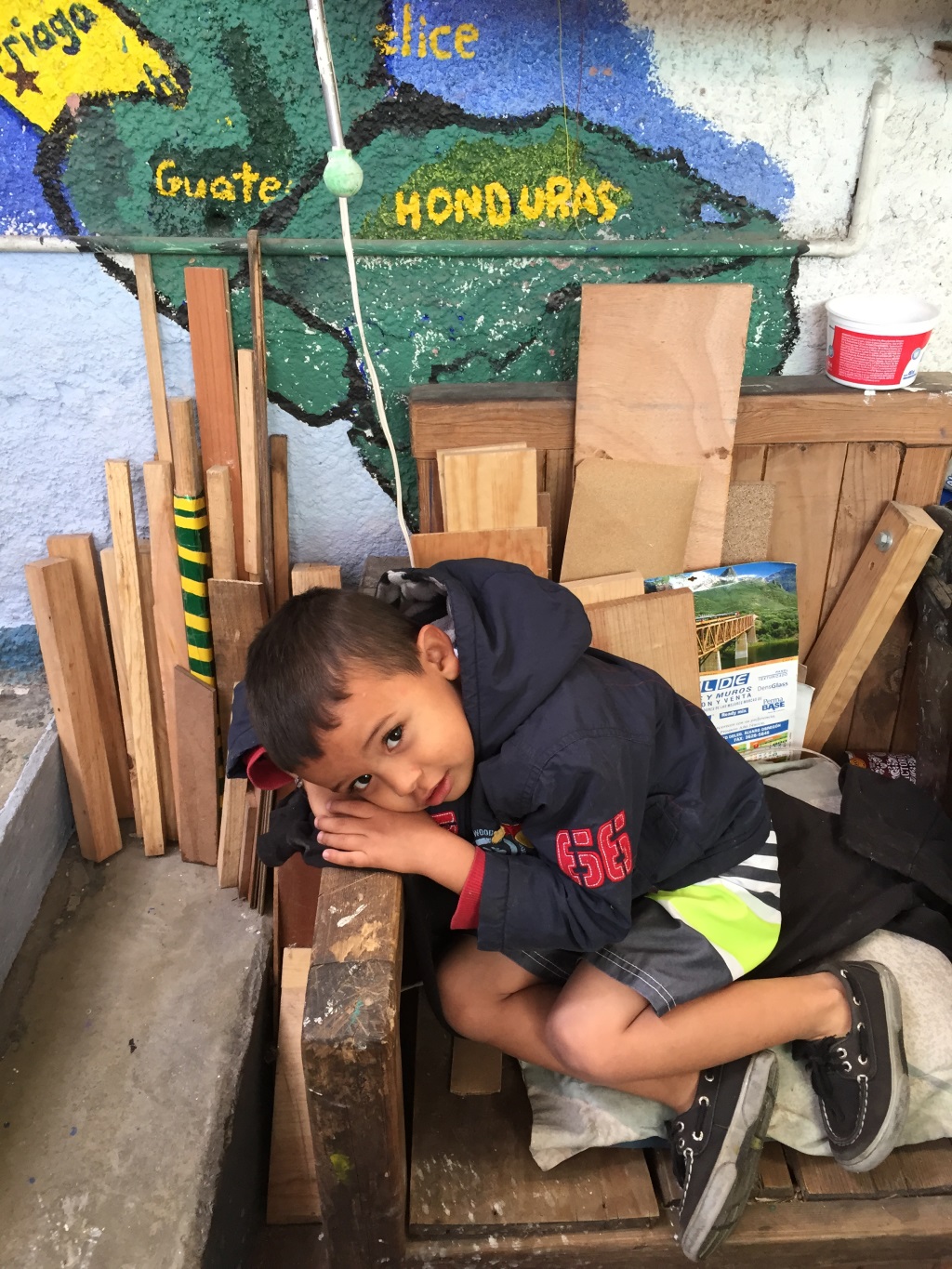Author: Emma Buckhout
In January, I had the opportunity to visit two migrant shelters in Mexico City. While cosmopolitan Mexico City draws immigrants and expats from all over the world, it has not traditionally been a prime destination, or even a way station, for Central American migrants. Traditional migrant routes north took them outside the city. Yet both shelters I visited reported a dramatic increase in the number of migrants, primarily from the Northern Triangle, arriving in the last two years. Corresponding with increases in violence in the Northern Triangle of Central America and increased migration enforcement operations in Mexico, the cases in these shelters show how Mexico City is receiving a growing number of migrants, including children, women, and family units who are increasingly hurt and in need of protection.

|
Sister Magda, one of the founders of CAFEMIN, reflected that while migration from Central America used to be for economic reasons, now it’s forced by violence. She shared the case of a mother and her 17-year-old son who had come to CAFEMIN earlier that year after their family had been directly targeted by gangs in El Salvador. Thanks to the help of CAFEMIN, they were granted refugee status in Mexico. However, fearing the gang knew where they were in Mexico after a press interview, they continued the journey to the United States, where they were apprehended by Border Patrol, detained, and later denied asylum and ordered deported.
Cases of family units seeking asylum in Mexico are all too common given the current context in the Northern Triangle. In 2015, El Salvador surpassed Honduras as the country with the highest homicide rate not at war, though Honduras and Guatemala follow closely behind. Violence and extortion from gangs and organized crime, as well as corruption and abuse by security forces, leave people without any safe havens and few options but to flee north.
Few asylum seekers from Central America have access to legal counsel to help them obtain refugee status in Mexico or even know that they can seek protection. The Mexican refugee agency, Comisión Mexicana de Ayuda a Refugiados (COMAR), remains understaffed and with only three offices it lacks presence in the majority of the country. While the number of refugee applications is steadily increasing in Mexico, it is still estimated to fall far short of the number of migrants who could potentially qualify. Many of the open cases are abandoned by migrants who have been discouraged by authorities, or don’t wish to wait out a several month process in Mexico, especially if they are in a government detention center instead of a shelter.
As more asylum seekers arrive in Mexico from Central America, Mexican migration enforcement has been strengthened with U.S. support, putting already vulnerable migrants at even greater risk. The day before I visited CAFEMIN, Edwin, a twenty-one year-old from Honduras, his twin sister, and her two-year-old child had been violently attacked while riding the train in Mexico. Edwin was badly beaten and left tied to a pole. Fortunately, he was rescued by the Red Cross of Mexico who brought him to CAFEMIN instead of allowing him to be taken to a migrant detention center by authorities from the Mexican immigration agency (Instituto Nacional de Migración, INM). Sister Magda helped him get medical attention, but he was still traumatized with no idea where his sister and her baby were.
In 2014, Mexico’s President Enrique Peña Nieto announced a new Southern Border Plan, which was supposed to “implement actions for the respect of human rights and the safe transit of migrant flows.” However, shelters and migrant rights advocates in Mexico report it has done anything but. Before, migrants passed through Mexico City on the train known as “La Bestia” without stopping. Now, that train route has become more dangerous, with migrants violently attacked at greater rates. The perpetrators of these crimes frequently remain in impunity and many suspect law enforcement agents are involved, acting in collusion with organized crime and private security forces. Migrants are finding more dangerous routes, walking farther to avoid attacks on the train.
Were it not for the shelters and brave volunteers like Sister Magda, these migrants would not have access to the services and support they so desperately need on their journey to seek protection and safety. As our conversation spiraled farther into the horrific challenges forcing migrants from their homes in the Northern Triangle, and those awaiting them in Mexico, Sister Magda echoed my thoughts by asking, “How do you give them hope?” Yet the images of a young woman from Honduras joking with others in the kitchen, neighbors bringing food donations, and young men, including Edwin, bidding me farewell with smiles on their tired faces confirmed that she and so many other migrant rights defenders are providing glimmers of hope for the migrants that arrive at their doors.
This article is a shortened version of the blog “More Migrants Are Coming, and They’re Arriving More Hurt”: Tales from Mexico City Migrant Shelters and originally appeared in the Spring 2016 issue of The Advocate, LAWG’s biannual newsletter. Download a PDF of the issue here.

